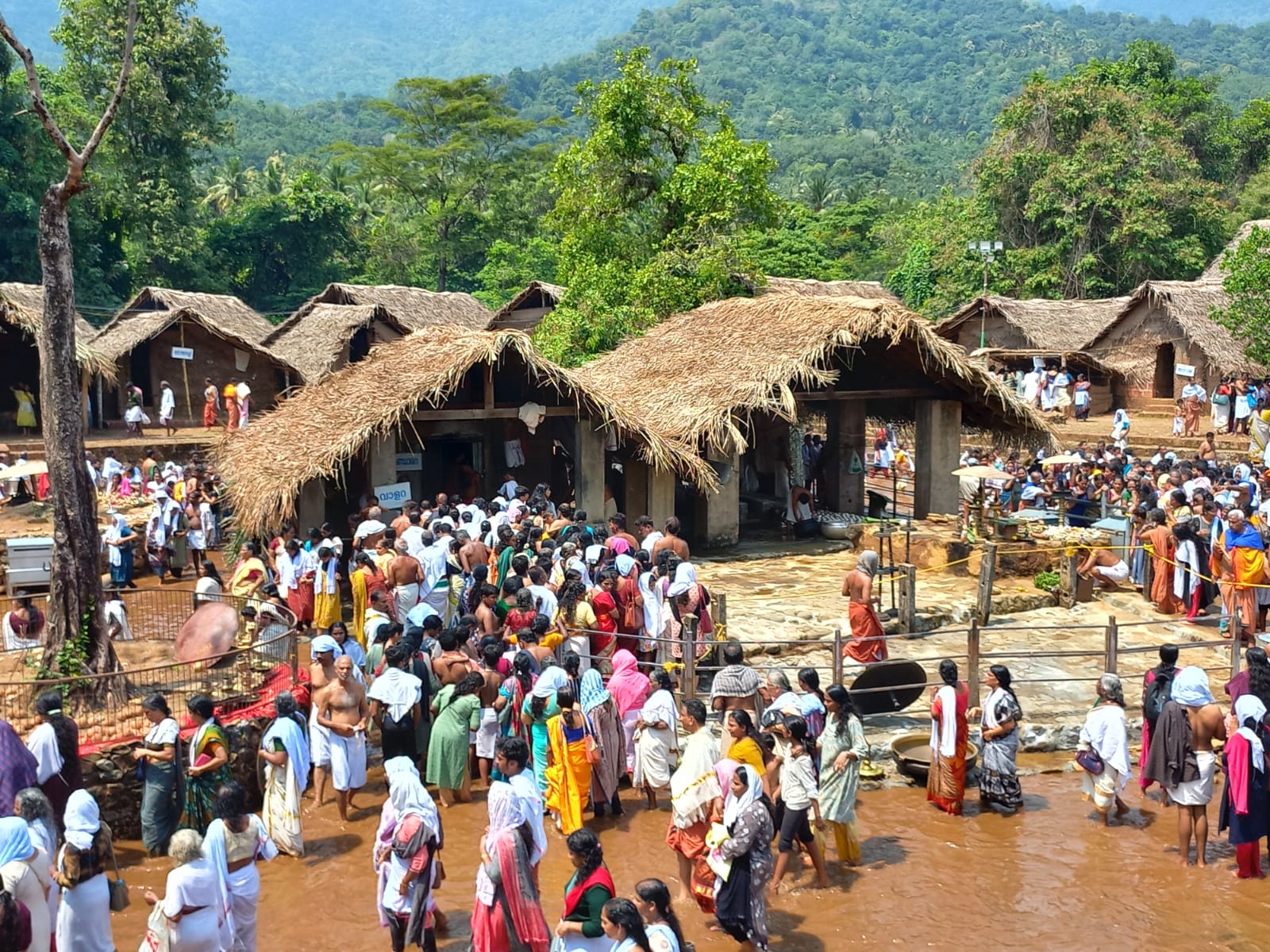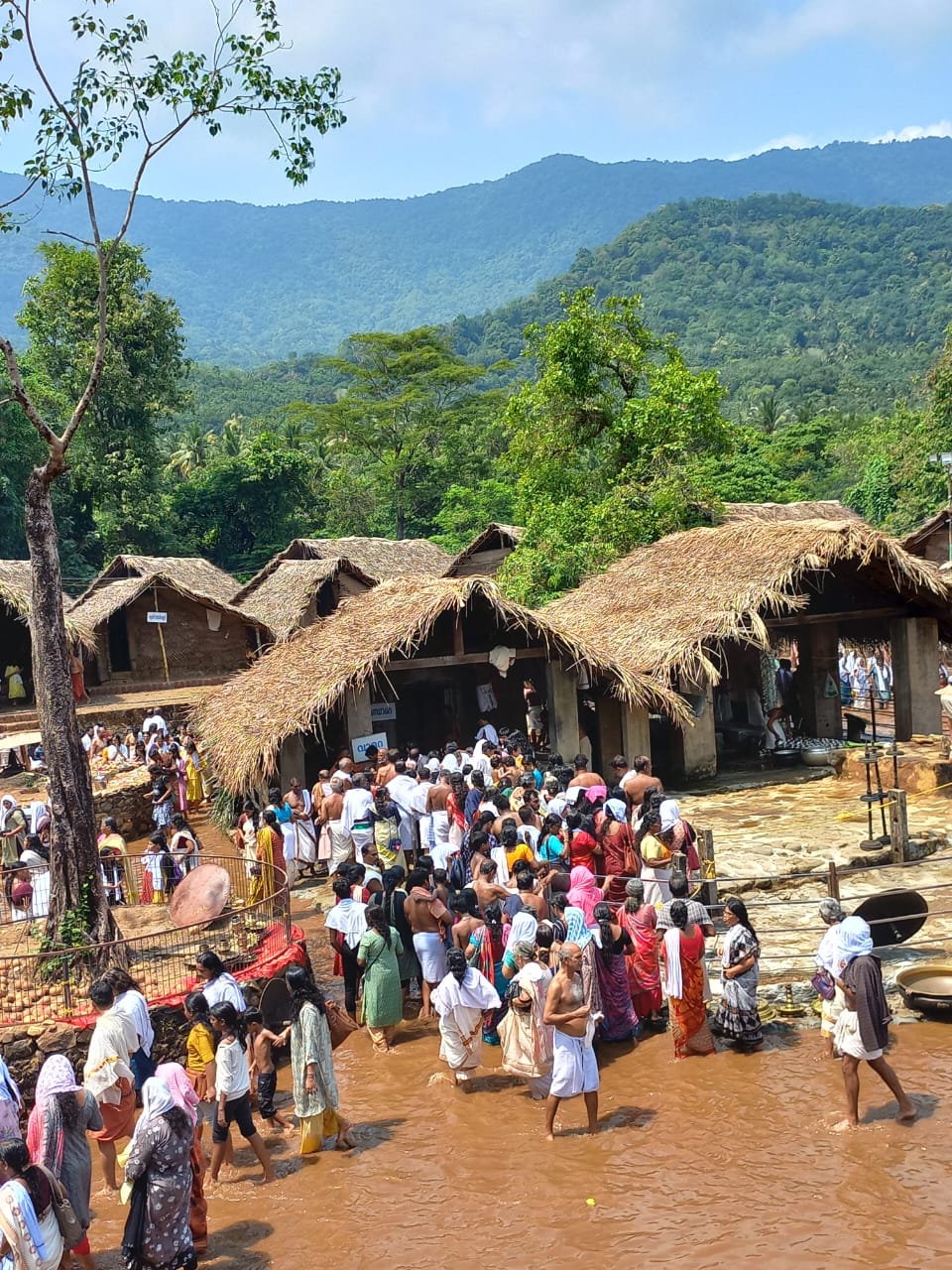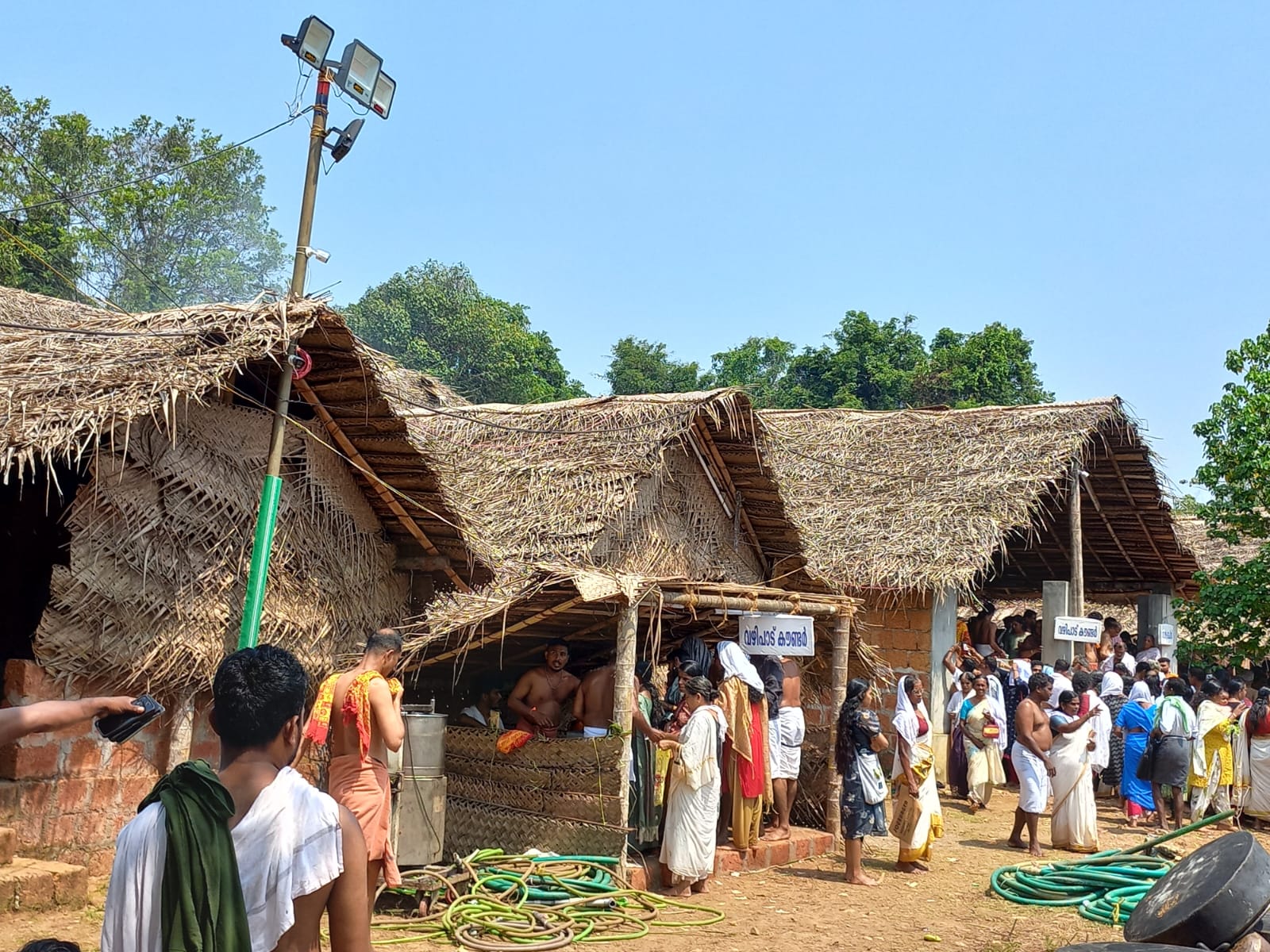4 June 2023
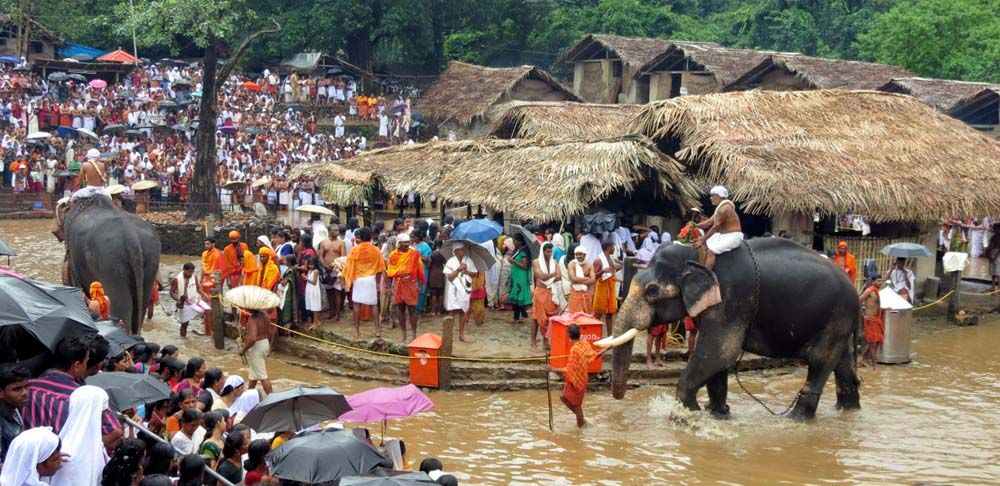
KOTTIYOOR VAISAKHA MAHOTSAVAM
Vaisakha Mahotsavam, the most beloved festival of North Kerala is hosted by two temples, Akkara Kottiyoor and Ikkara Kottiyoor situated on the banks of River Baveli started here. The Temples situated on the beautiful foothills of Sahya mountain range and blessed with serene nature, is one of the oldest pilgrimage centres located in north Malabar, Kerala.
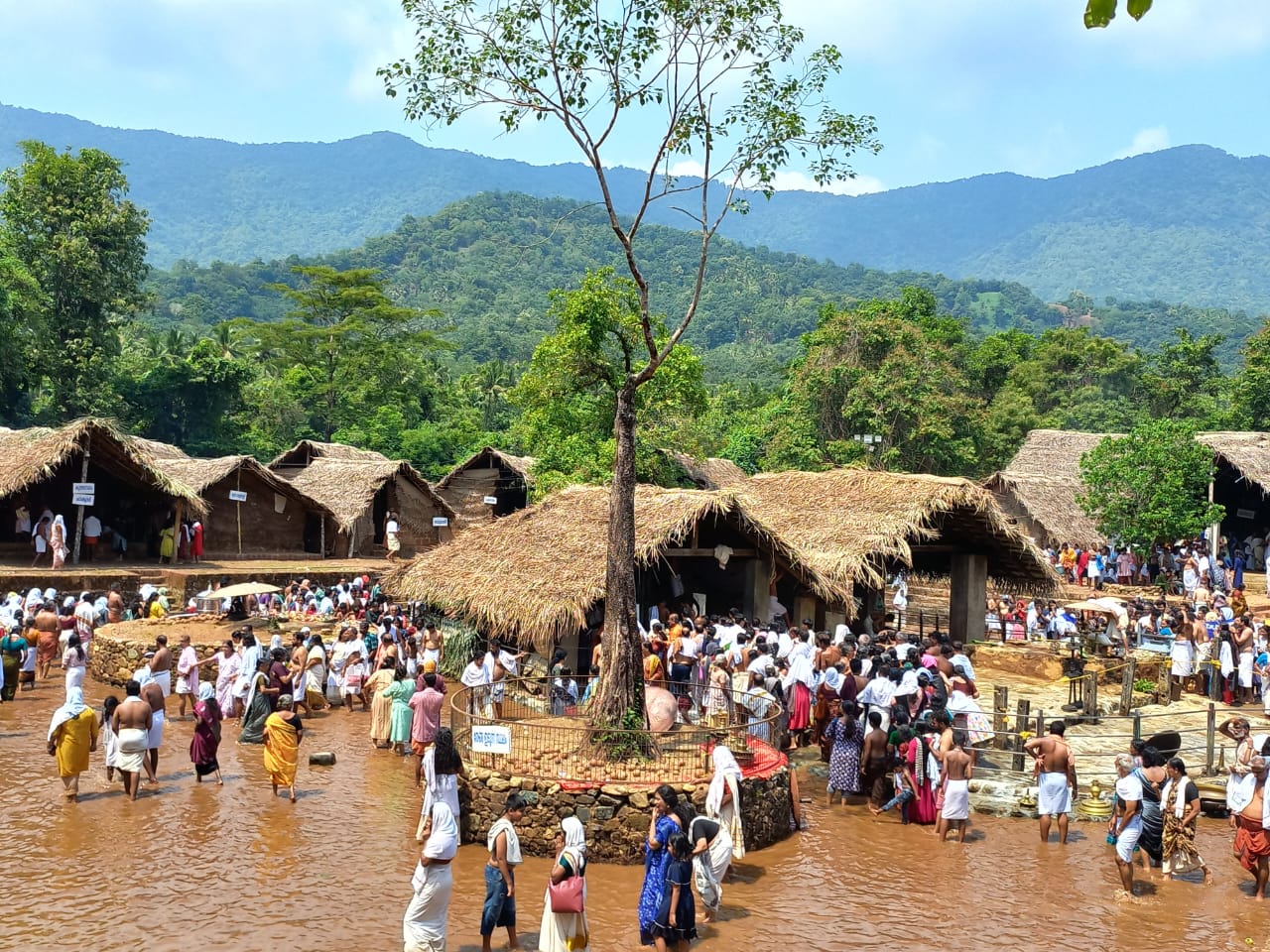
Thousands of devotees flock to this unique festival, Kottiyoor Vaisakha Mahotsavam – the ‘festival of nature’ during the monsoon where the temple opens only during the festival days annually, usually during May – June month lasting for 28 days.
The Vaisakha Mahotsavam begins with the ritual of bringing a sword from Muthirerikavu in Wayanad and on the following day ’Bhandaram Ezhunnallath’ on Visakham nakshatra (star) is held. The festival starts on Chothi of the Malayalam month of Edavam and continues till the Chithira of Midhunam, as per the Temple Calendar. Usually the ‘Vaisakha Mahotsavam’ starts on the monsoon and the River Baveli meanders through the picturesque foothills in between the lush evergreen forest, the devotees truly enjoys the monsoon starting with the ritual ‘Neyyattam’, offering ghee to the deity, Swayamboo, the self-created idol in the fierce form of Lord Shiva who impeded the ‘Yagam’ of King Daksha with his holy spirits.
King Daksha was the son of Brahma Deva and his youngest daughter Sati Devi fell in love and married Lord Shiva without Daksha’s permission. King Daksha once held a Yagam and did not invite his daughter Sathi Devi and Shiva. Sathi Devi went to the Yagam in spite of the warning of Lord Shiva, Daksha started to insult her and Sati Devi immolated herself in the ‘yagagni’ due to humiliation. Lord Shiva was infuriated and ‘veerabhadra’ and ‘Badrakali’ emerged, disrupted and destroyed the yagam. Veerabhadra killed Daksha. Lord Shiva became calm and agreed to restore Daksha’s life and Yagam at the request of Lord Brahma and Lord Vishnu, as the mythology says.
Years later, local tribal people could find the ‘swayambu idol’ and started worshipping Lord Shiva and Sati Devi during the Vyshakha Mahotsavam at ‘Akkara Kottiyoor’. ‘Ikkara Kottiyoor’ is the temple where regular poojas and rituals were conducted throughout the year as per the spiritual vision of Sri Shankaracharya.
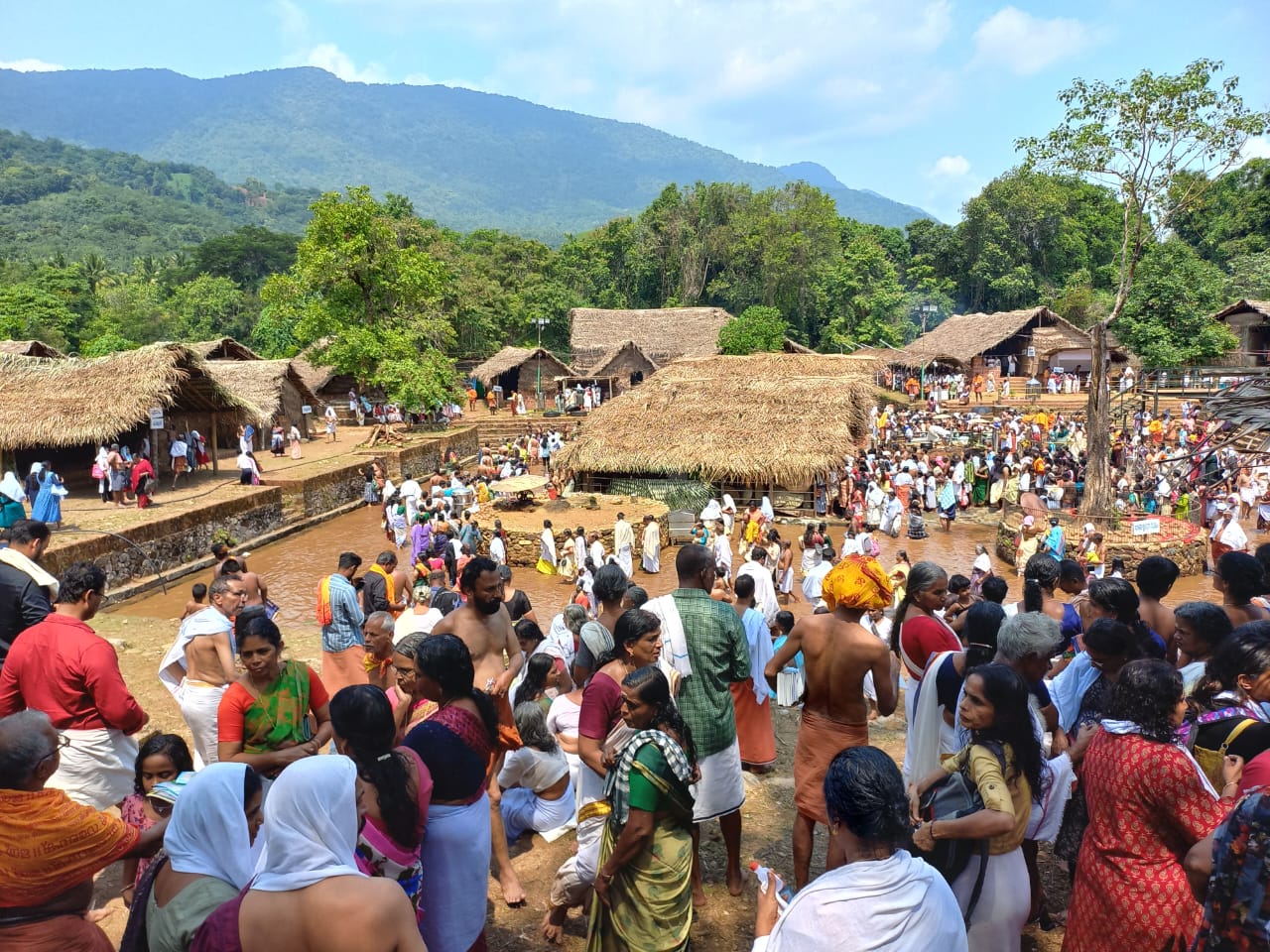
Here in Akkara Kottiyoor, no formal structure is made, instead temporary thatched structures erected for the priests and others and the deity is placed on a ‘manithara’, a raised platform made of river-bed stones.
Rituals ‘Elaneer Vayppu’, offering tender coconuts offered by the devotees and ‘Rohini Aradhana’, a rare ritual in which the head of the priests embraces the ‘swayambhu’ Shiva Linga with the belief that Brahma himself worships Lord Shiva to pacify him were practiced and the festival concludes with the ‘Elaneerattam’ in which collected tender coconut water is poured on the deity.
Here everything is co-related to nature including the ‘odapoovu’, a white flower made by beating the bamboo stick on a stone that represents the beard of the King Daksha, usually devotees take it to their home to adorn and respect the age-old traditions and divinity. Devotees believe that this ‘Odapoovu prasadam’ would bring prosperity.
The Kottiyoor Temple, also known as ‘Dakshina Kashi’ is highly revered as it is blessed with divine presence of Brahma, Vishnu and Shiva. It is one of the few shrines in India, Sati Devi is worshipped and it is forbidden to build any permanent structures, only simple temporary structures resembling ‘parnasalas’ of hermits in ancient sages.
The Temple is in Kannur district, Kerala nearly 43 Kms away from Kannur International Airport and 54 Kms from Thalassery Railway Station.

